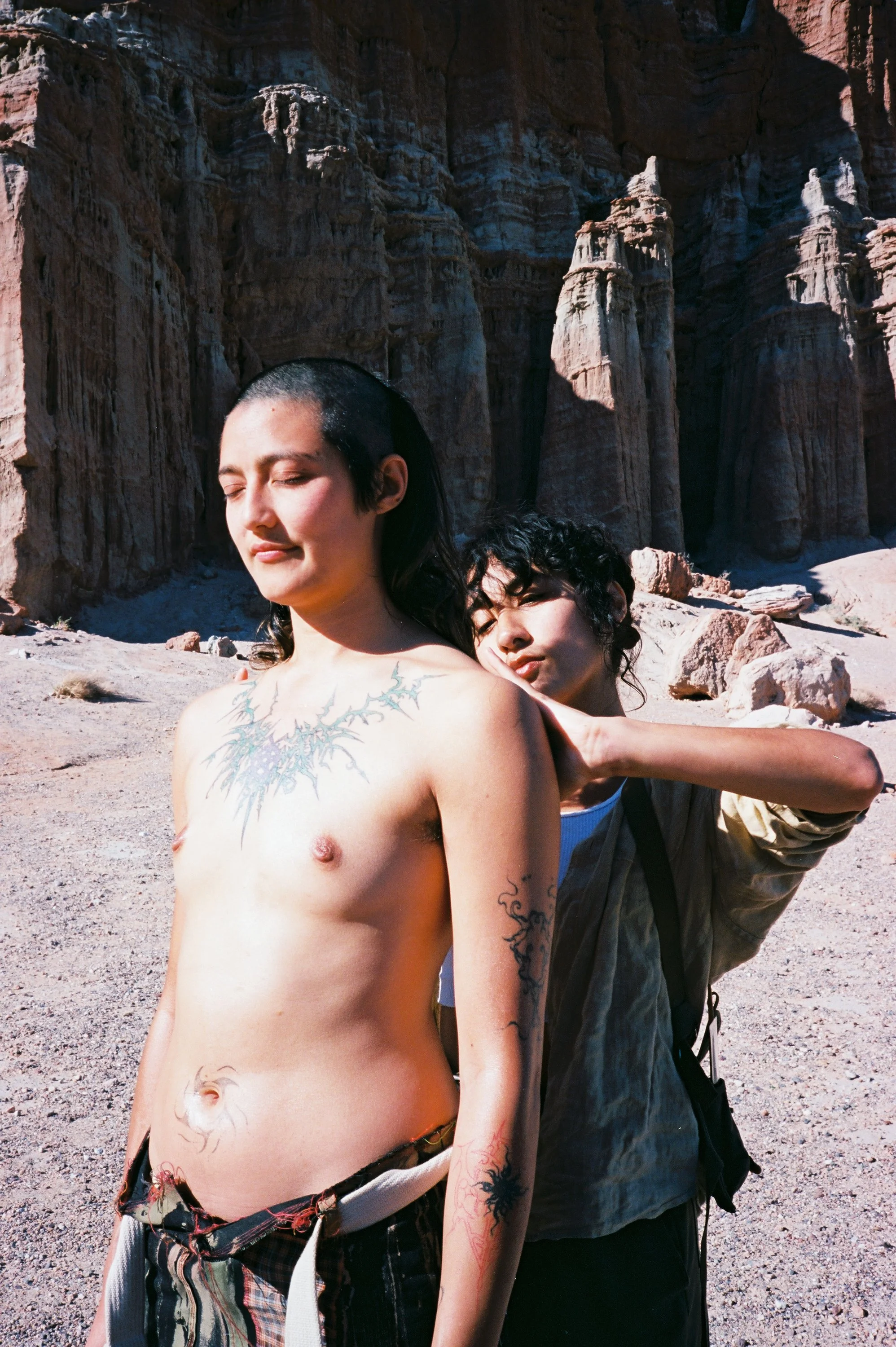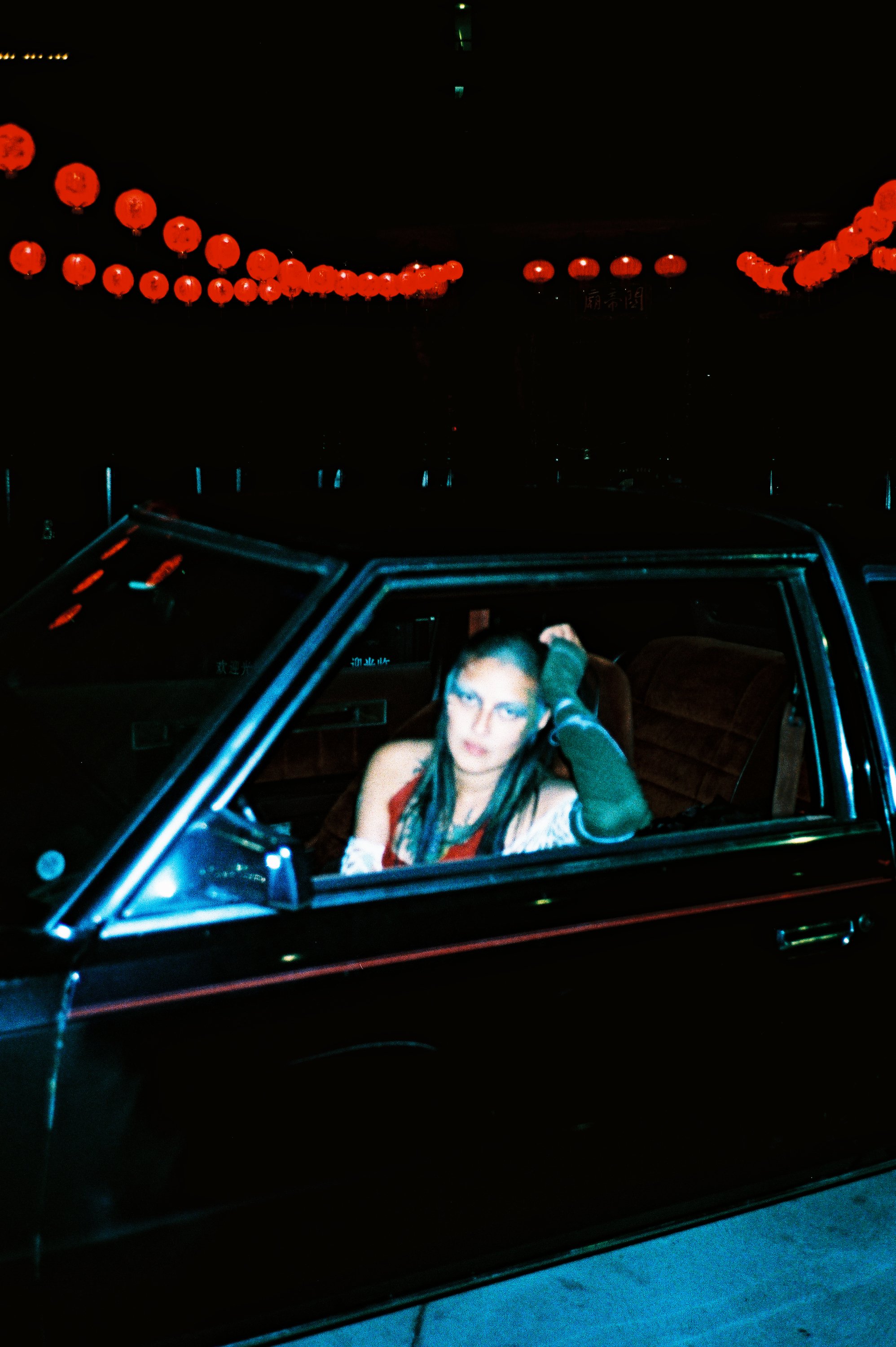YaYa Bones | "Better Off Alone" Music Video
by Jess Ferguson
Bones Tan Jones, London-based artist and musician known musically as YaYa Bones, releases a music video for the track “Better Off Alone” off their recent EP, Dust 2 Dust. The cover of the Eurodance project Alice Deejay’s hit from the late 1990s nods to Alice Deejay in the video’s description: “Alice Deejay got me through a break up, heres my thank you.”
The video, shot and directed by Mounir-Aicha Soussan, features stunning visuals of Bones dancing in a desert, which is later intercut and layered with shots of Bones driving, dancing, and walking in Los Angeles’ Chinatown. The video’s dreamy cinematography goes hand-in-hand with Bones’ rendition of the track, which offers a more stripped-down, dreamy take on the Dutch dance-pop hit. Bones’ makeup, done by artists Pyro Xolo and Julie Hassett, gives Bones an editorial edge, with various colorful eye looks and metallic lips.
Bones’s work combines spirituality, queerness, optimism, and activism. Some of their projects from last year include ECLIPSE, a mythical, queer video installation, and a Shanghai Biennale installation that comments on the environment through the character Una Jynxx. Their recent music performances include June’s Glastonbury Festival, with artists like Paul McCartney, Kendrick Lamar, and Billie Eilish on their lineup, and Power House Culture, a “queer arts bender,” at Cambridge Junction. Bones also co-founded Shadow Sistxrs Fight Club, which teaches self-defense classes to women, trans and non-binary people, and people of color. Bones talks to director Soussan for Flaunt about Alice Deejay, the “Better Off Alone” video, and queer art.
Soussan and Bones caught up to discuss the video, nightlife, the original “Better Off Alone,” and more!
Mounir-Aicha Soussan: Alice Deejay’s 1999 single “Better Off Alone” has made a resurgence in London’s queer nightlife. Do the lyrics ring differently in a post pandemic landscape in which people struggled with isolation?
YaYa Bones: Every single party I’ve been to, someone has played a cover of or a version, or remix of this classic ‘90s banger. As we were coming out of the pandemic, many of us were finally able to be back together again. Because we had been so apart and isolated for many months during lockdown, coming back together again felt not only needed but new and exciting—especially for queer, POC communities. The song felt for me, very emotional, and a sense of nostalgia for the ‘90s as well as being among community—it felt like a party. These moments and songs became nostalgic portals of childhood and adolescent memories. With this song in particular, we’d be in a club with so many different people with distinctive music tastes but we would all know the lyrics because it was such a banger.
We’ve talked a bit about different interpretations of the lyrics—maybe you could expand on your take and what spoke to you when you decided to produce your cover? Also, what solitude can teach us in the wake of heartbreak?
When I did my cover of the track, I was going through a personal relationship breakdown. I was listening to the original track on repeat during my breakup. It was the first thing I’d listen to in the morning—I’d wake up and play it loudly and dance around my home. I knew how cheesy it was, but I think that’s why it helped—it made me laugh at my heartbreak, it was the only thing getting me through it. Finding joy and irony in the process of heartbreak. When I was writing the cover, I wanted to make a more melancholic version—for me, the lyrics reminded me that I am better off alone in terms of what I needed in the wake of heartbreak—to fall in love with myself again and find healing in solitude. The cover was a way of reminding myself that—the power of being alone. There’s nothing I need that I cannot provide for myself.
Alice Deejay’s singer Judith Anna Pronk belly dances against the backdrop of kaleidoscopic images in the 1999 music video. The visual language is representative of pop music videos of the time—Westernized and flattened associations of the Orient—a Moroccan teapot and glasses, “oriental” rugs lining the floor, Moorish arches, dunes, the expanse of the desert. Our video also explores the expanse of the desert, but we find you moving slowly, grounded, and taking your surroundings in with awe—which feels starkly different from the performance of the male actor in the 1999 version who loses himself in that landscape— abandoning a broken down Jeep, gets dehydrated, comically yells to the skies, and has a mirage of embracing his ex-lover.
The desert is this massive expanse, and there is a trope of getting lost in “nothingness,” when it is actually a lot of everything. This landscape is totally new to me and different from what I’m used to living in, but I felt very calm and in awe of the landscape and the spirits I felt resided there. The cliff we filmed in front of felt like it had so much to say, and there was nothing but to be in awe of it. So I tried to move in conversation with the land, while still feeling like a visitor to that space.
The other part of our video takes place in Chinatown in Los Angeles. There was some synchronicity I thought you might want to speak to.
Visually, I love the contrast between expanse of desert and bright lights, lanterns, and narrow streets that feel quintessentially Chinese. I’m half Chinese, and I grew up spending lots of time in Chinatown in Liverpool. We didn’t plan it when we shot there, and it wasn’t until my most recent visit to LA where I visited Chinatown in the daytime. When you and I shot there, it felt like a ghost town. It almost felt like we stepped into the set of a movie where all the actors had gone home. It was just us in this post-Lunar New Year, firecrackers all over the street. It was magical and ghostly and felt like it was so full of stories, and we were within that story. When I went back in the daylight, I went back to where we shot it. I noticed a 93 on the building we shot in front of, the year I was born. I also noticed that the very street that it’s on is called Mei Ling Way. Mei Ling is the Chinese name I was given as a baby—it means beautiful bell. It felt right that we shot it there—it was very welcoming and affirming.
That reminds me of the different networks of connection and association we have as queer and diasporic people when we travel and the symbolic things that find us.
The whole production of this film has been super DIY; we do it for ourselves, and that’s how we work as a queer community. We thrive in connection with others, and what makes my heart soar is knowing the mycelium web of queer connections transcends borders and oceans. Having a community of queer creatives in Los Angeles, working with you and Pyro, even though I’m living in London, is beautiful. The queer Asian community in London is thriving, but it’s still in its infancy stages. We’ve only had our first club night, GGI, which was started by my friend June Lam this year. It’s the first time we’ve had a space to be queer and Asian together in London. When I got back from my trip to LA and filming with you, I went straight to my performance at GGI. The queer and Asian community in LA feels more established in a way and it was really inspiring for me to be portalled into that and make all these connections.






